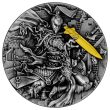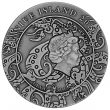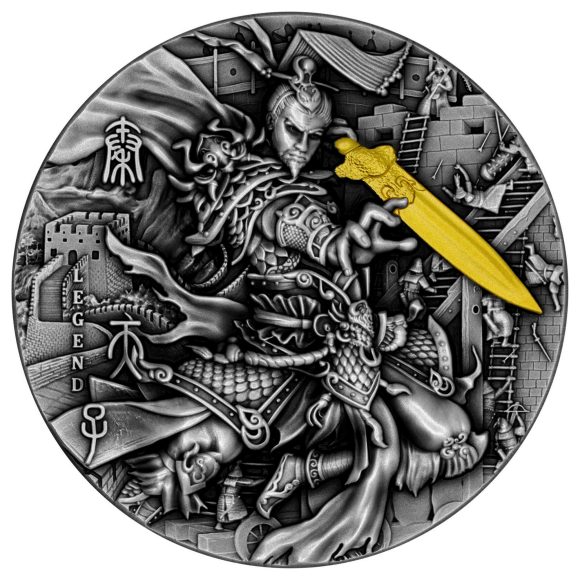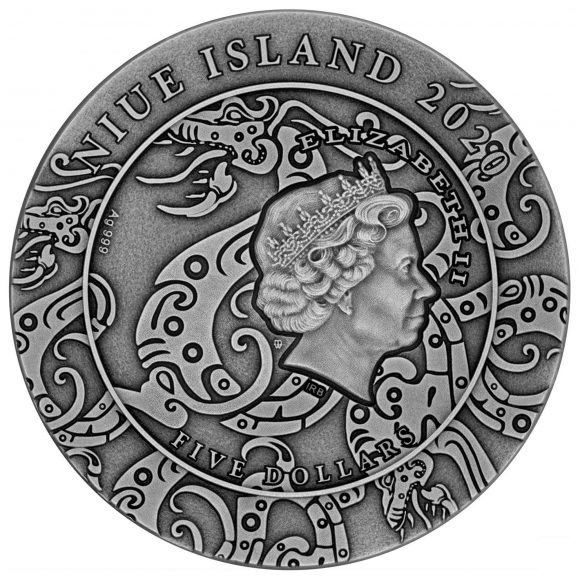Qin Shi Huang was the first Chinese emperor to unify the territories, their currency and even their writing. He came to power 2300 years ago in a China that was divided into feudal states. Qin Shi Huang is the first issue in the Legends of the Great Chinese Emperors series.
Qin Shi Huang
| Legends of the Great Chinese Emperors | |
| Year of issue: | 2020 |
| Issuer country: | Niue |
| Face Value: | Five Dollars |
| Metal: | Silver |
| Purity: | AG.999 |
| Weight: | 2 oz |
| Dimensions: | 45 mm |
| Relief: | High relief |
| Finish: | Antiqued |
| Additional: | Gold plated |
| Mintage: | 500 pieces |
Description
Emperor of China, the first of the Qin dynasty (221-210 BC). Of the seven states that made up the period of the Warring States at the end of the Eastern Zhou Dynasty, the kingdom of Qin was the one that rose to power over all the others, thanks to its superior development of military technology and its strong political and social organisation.
King Ying-Zheng of Qin led the military expansion. After unification in 221 BC, he proclaimed himself emperor. Since he himself was firmly convinced that he was inaugurating an endless dynasty, he added the character shi, meaning „first”, to his imperial title. Thus his official name was recorded in the annals as Shi Huang Di or Shi Huangdi, to which the name of his dynasty was later added: Qin Shi Huang Di („First August Emperor of the Qin Dynasty”).
Qin Shi Huang was able to turn the vast conquered territory into a unified, centralised and bureaucratic state. The Qin dynasty, however, was relatively short-lived (221-206 BC). Advised by his minister Li Si and inspired by the legalistic philosophy created in the 3rd century BC by Han Frei, he established a centralist system based on the application of the law through a rigorous code of rewards and punishments. Intolerance of any philosophy or current of opinion that did not conform to the characteristics of his tyrannical rule led to the persecution of Confucian followers and the burning of Confucian books. Along with these measures, the emperor, on the advice of Li Si, realised the need to unify the different existing writing systems into a single style which, from then on and thanks to the development acquired with the appearance of the brush and ink in the Han dynasty, became the common instrument of communication and civilisation in Chinese territory until the present day.
In his project to unify China, Qin Shi Huang took other effective measures. He established an extensive bureaucratic apparatus, standardised weights and measures and established the monetary unit. Building on the systems of administrative division put in place in previous centuries, the emperor divided the empire into thirty-six commanderies, governed by a civilian governor, a military governor and an imperial inspector or government delegate. These commanderies were in turn subdivided into counties, governed by magistrates who reported directly to the government delegate. None of these offices were hereditary: those who held them could be removed from office at any time, in order to prevent the accumulation of privileges and personal enrichment in this way. This system was intended to prevent the creation of small states and, above all, to reinforce the idea of central power, based on a strong and efficient administrative system.
It also promoted the construction of a great road network, converging on the capital Xian, to facilitate exchanges and contacts. Qin Shi Huang’s strong government was able to mobilise large masses of workers. That is why it is not unusual to find colossal works such as the Great Wall of China or the astonishing imperial tomb. Just as he removed the inner fortifications to give unity to his new empire, Qin Shi Huang had the Great Wall built to reinforce the northern frontier and defend it from attacks by nomadic peoples. But more than a military and defensive utility, the Great Wall symbolised the boundary between barbarism and civilisation. It warned the various peoples who inhabited the civilised area of China that if they crossed that boundary, seeking to escape the rule of the Chinese government, they would also be outside its tutelage and its superior culture.






Other products of Legends of the Great Chinese Emperors




Twoje pytanie zostało pomyślnie wysłane. W niedalekiej przyszłości otrzymasz odpowiedź.

Sprawdź swój e-mail, aby otrzymać wiadomość potwierdzającą.










